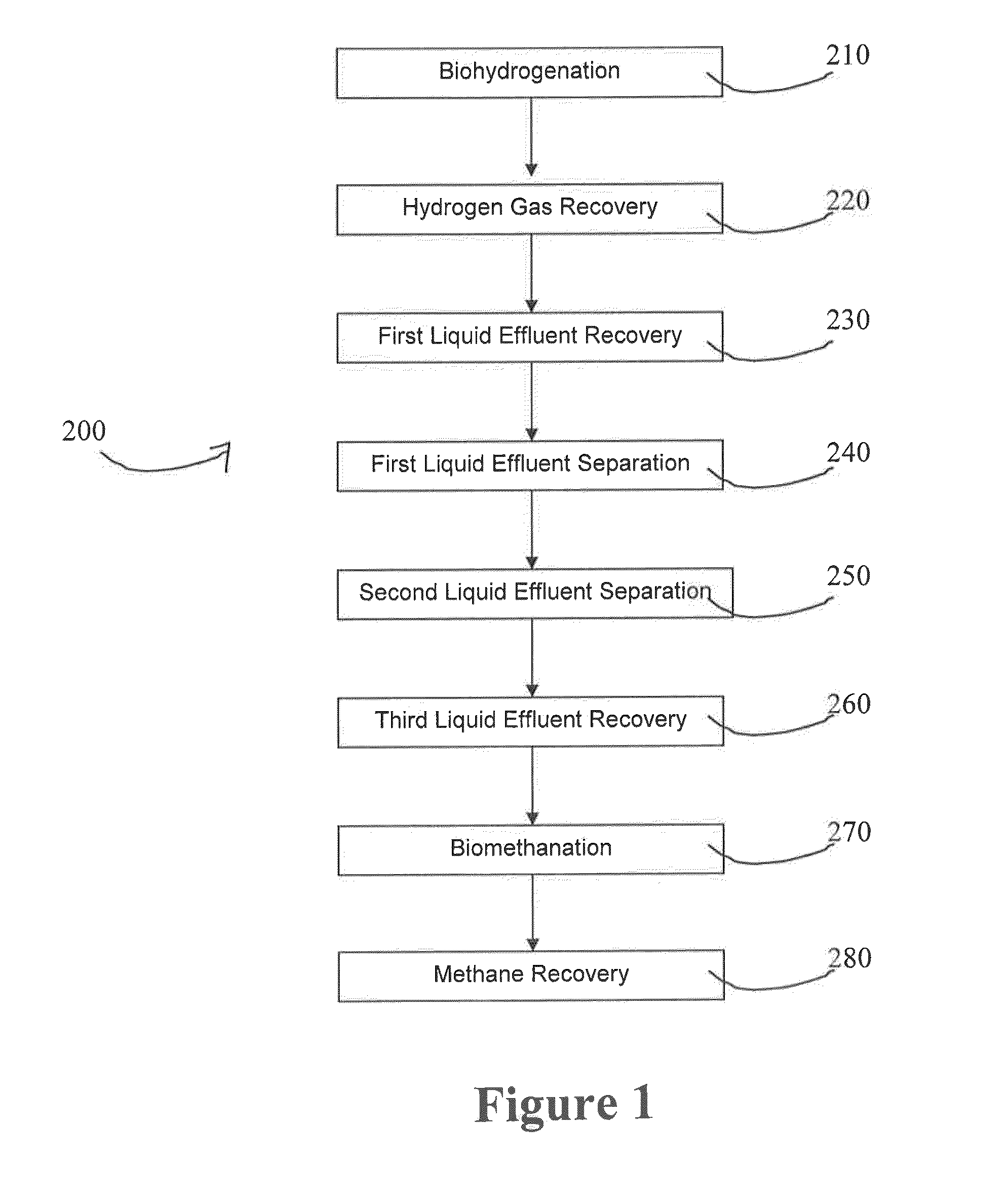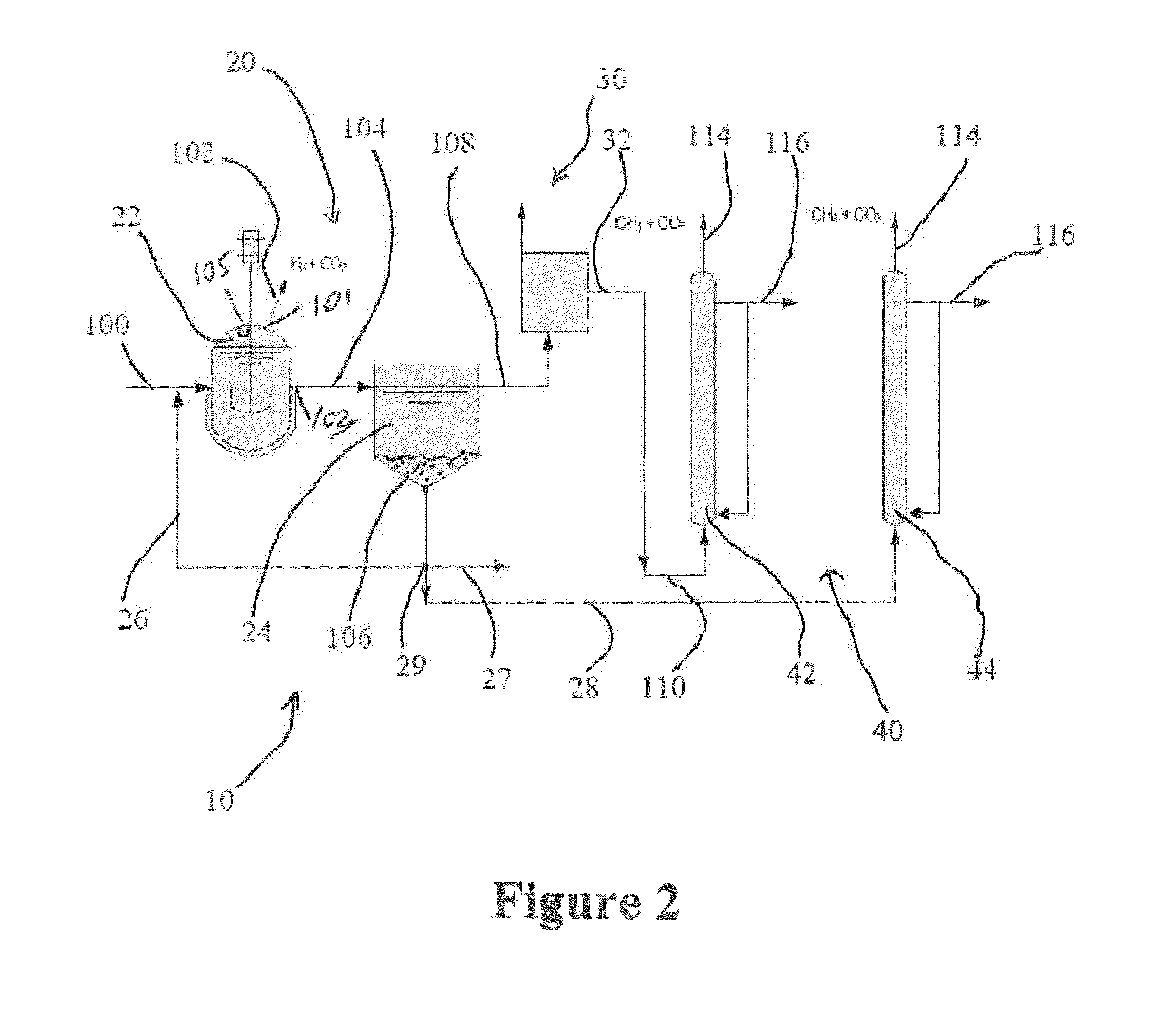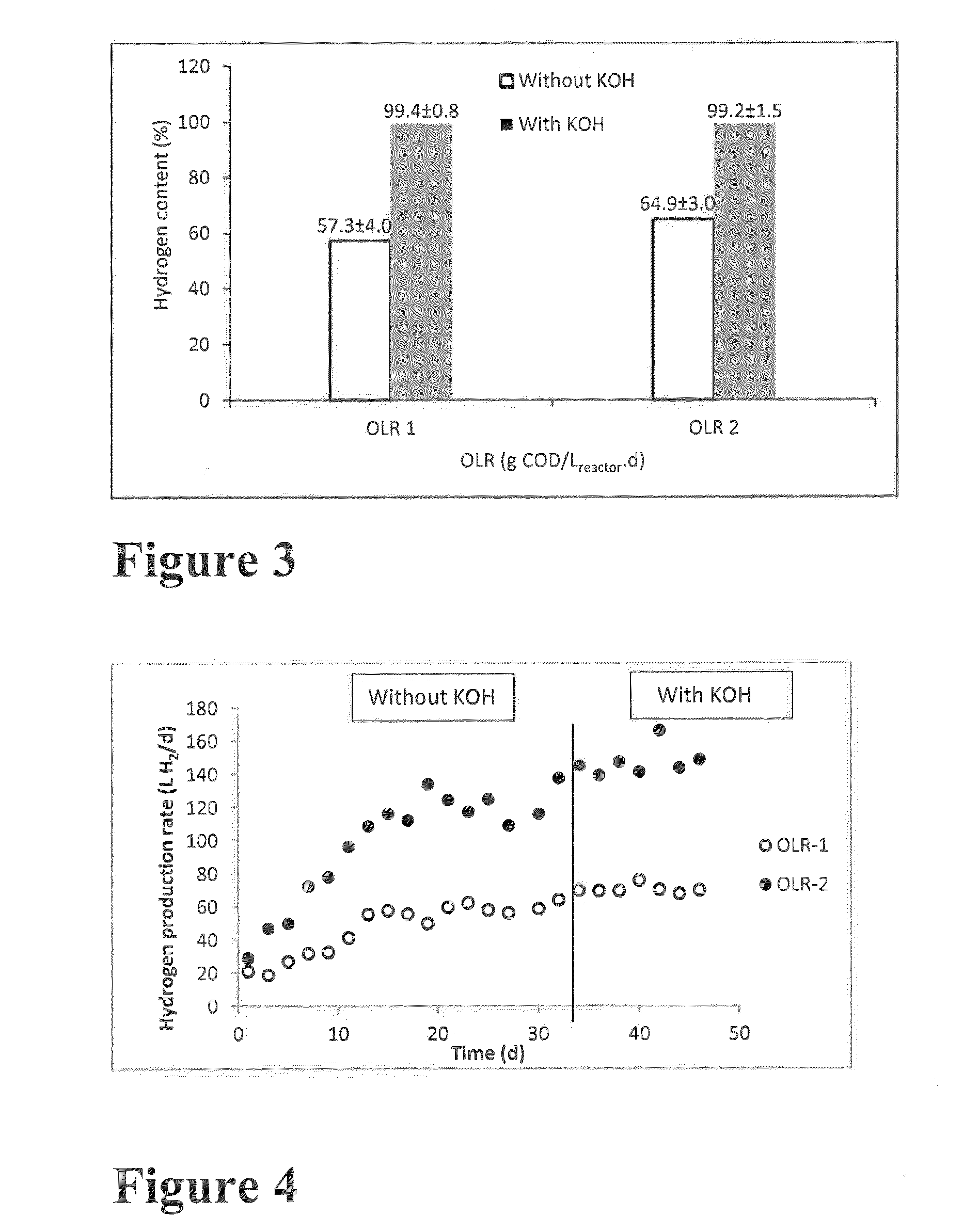Biohydrogen production method and reactor
a biohydrogen and reactor technology, applied in the field of hydrogen production, can solve the problems of requiring energy, reducing the hsub>2 /sub>yield of propionate, and high capital cost of processing equipment and maintenance for sparging processes
- Summary
- Abstract
- Description
- Claims
- Application Information
AI Technical Summary
Benefits of technology
Problems solved by technology
Method used
Image
Examples
examples
IBRCS Setup
[0080]During testing of system 10, three major changes in the effluent volatile fatty acids (VFA) concentrations were observed with CO2 sequestration, an increase in the acetate concentration by an average of 45%, a decrease in the butyrate concentration to an average of 51% of its original concentration, and a complete elimination of the propionate production. Moreover, during testing, the hydrogen production rates under two different organic loading rates were 63 L H2 / d (at 9 g / L of glucose) and 132 LH2 / d (at 17 g / L of glucose) and almost 100% pure hydrogen was achieved.
[0081]Two integrated biohydrogen reactor clarifier systems (IBRCSs) consisting of a CSTR (7 L working volume), followed by a gravity settler (8 L volume) were operated in parallel at two different OLRs. For further details on the system design, refer to Hafez et al. [2009]. OLR-1 and OLR-2 were 25.7 and 51.4 gCOD / L-d, respectively. A cylindrical CO2 trap (0.25 L volume) with a porous bottom was introduce...
PUM
| Property | Measurement | Unit |
|---|---|---|
| volatile | aaaaa | aaaaa |
| concentration | aaaaa | aaaaa |
| pH | aaaaa | aaaaa |
Abstract
Description
Claims
Application Information
 Login to View More
Login to View More - R&D
- Intellectual Property
- Life Sciences
- Materials
- Tech Scout
- Unparalleled Data Quality
- Higher Quality Content
- 60% Fewer Hallucinations
Browse by: Latest US Patents, China's latest patents, Technical Efficacy Thesaurus, Application Domain, Technology Topic, Popular Technical Reports.
© 2025 PatSnap. All rights reserved.Legal|Privacy policy|Modern Slavery Act Transparency Statement|Sitemap|About US| Contact US: help@patsnap.com



